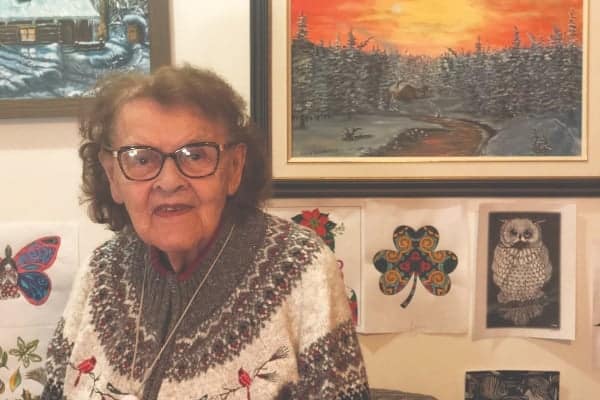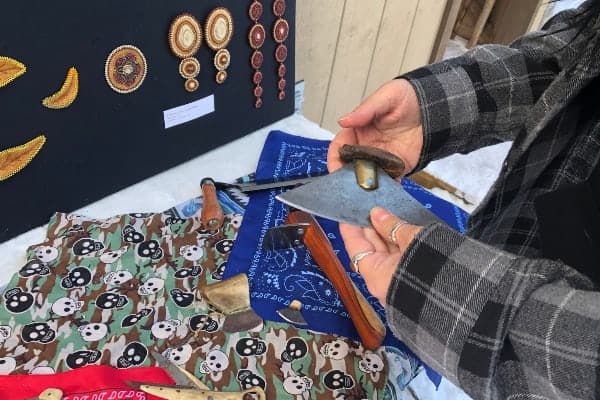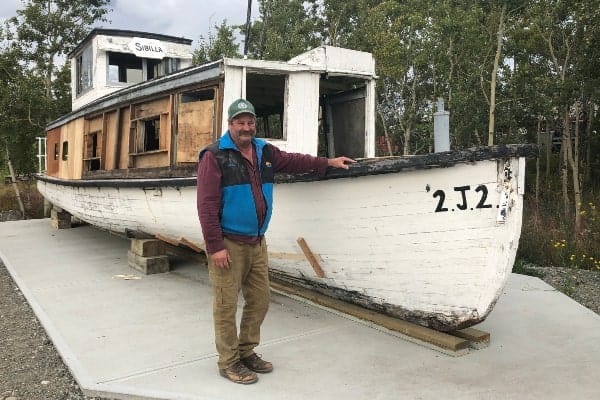On an evening in early November, Teri-Lee Isaac and her family butchered a caribou that was given to them by family in Fort McPherson. While the practice gives the family a freezer full of wild meat for the upcoming winter, it also connects them to the land, and to Northern Tutchone cultural practices that have been passed down through the generations.
“We have our family’s cabin and fish camp that we use to take our kids out hunting. They’ve seen us harvest a caribou this season and cut it up,” said Isaac. “So, I live the traditional lifestyle and whatever I promote at work, I promote at home too.”
For the past five years, Isaac has been working as the heritage manager for Selkirk First Nation. Before that, she managed Big Jonathan House—the First Nation’s cultural centre in Pelly Crossing. The building is a replica of Chief Big Jonathan’s house that was the main gathering place in Fort Selkirk in the early 1900s. While growing up, Isaac was raised by her grandmother. She stayed in Fort Selkirk for a few years while her grandmother was working as a cook for the restoration crew at the site.
“Fort Selkirk has always been a second home to me,” she said. “We played in those old historic buildings, we pretended we were teachers and students in the old school, and ran around in the bushes.”
Fort Selkirk, located on the Yukon River near the mouth of the Pelly River, has been an important site to the Northern Tutchone people for thousands of years. It was home to many before the Hudson’s Bay Company established a trading post there in 1852 and a community developed there in the early 1890s. When the Klondike Highway was improved and came into common usage in the 1950s, the highways became the territory’s main transportation route. Instead of moving people and goods on the Yukon’s river systems, the land routes were used more and more. Fort Selkirk was abandoned in the 1950s. It is now a Yukon Historic Site that is co-owned and co-managed by the Selkirk First Nation and the Government of Yukon.
“I learned a lot about Fort Selkirk as a child. I always knew it was a trading place and as I got older we found out more, as people started to talk more about their culture,” said Isaac. “When people started to talk more about their experiences in residential school, people started opening up about their culture and remembering.”
Isaac and others in her community think of it as their ancestral home, along with another site that is close to her heart called Ta’tlamän Lake. Ta’tlamän Lake is about 40 kilometres southeast of Pelly Crossing.
“Ta’tlamän Lake is the other place where my ancestors actually originated from. That’s where my grandparents came from and my people came from before we were called Selkirk First Nation people,” she said. “Back then we were just people of the land, we didn’t have a specific name. So when people came from Ta’tlamän Lake, they were called the Ta’tlamän people.”
No one lives at the lake now, but it remains an important site for the First Nation’s culture camps. For Isaac it’s a special place.
“Oh, I feel a deep connection. I mean, it’s very spiritual there,” she said. “I just feel like that’s home. Knowing it is where my third grandpa and grandma lived and thrived off of the land and walked those trails that we now travel on.”
When the highway was improved and came into common use, everything changed for the Northern Tutchone people living at Fort Selkirk and Ta’tlamän Lake. Many moved to be closer to the highway to access transportation and services, and that’s how Pelly Crossing was established.
“I think the highway really impacted our people because they lived off of the land and that’s all they knew. They trapped and they traded. Their diet consisted of wild meat, berries off the land and traditional plants,” said Isaac. “When the highway came through, people started establishing their livelihood near the highways and little did they know it was going to be a health hazard to them.”
Moving away from the traditional lifestyle meant that many of the people lost the skills they needed to survive on the land.
Now, as heritage manager, Isaac is working to bring those skills back to her community. Isaac’s work life often intersects with her home life. She has three kids and she sees the work she is doing as benefiting them and future generations of people in her community.
“Our traditions are so important to pass on to the next generation,” said Isaac. “So that they will never forget who they are and where they come from.”




